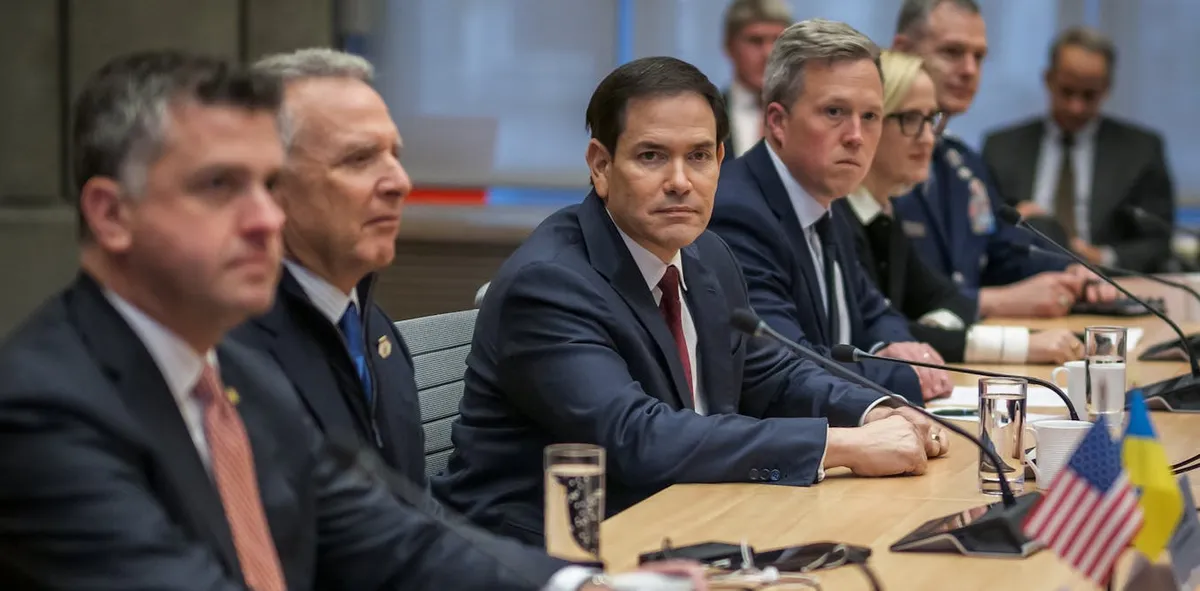
As the conflict in Ukraine continues to escalate with relentless Russian bombings, a significant diplomatic challenge has emerged surrounding a proposed plan to end this nearly four-year-long war. On November 20, 2025, the Trump administration formally presented Ukraine with a comprehensive 28-point proposal aimed at achieving peace. President Donald Trump announced a tight deadline, urging Ukraine to sign the agreement by Thanksgiving.
However, both Ukraine and its allies in Europe and the United States have expressed deep concerns regarding the proposal, asserting that it heavily favors Russia. The plan necessitates Ukraine to relinquish territory not currently occupied by Russian forces, reduce its military strength, and ultimately risks undermining its long-term sovereignty. Critics, including policy experts and some lawmakers, have accused the Trump administration of crafting a plan that primarily serves Russian interests.
The situation became further complicated when Secretary of State Marco Rubio found himself at odds with U.S. senators over the authorship of the proposal, leading to confusion about whether it was drafted by the U.S. or was essentially a Russian initiative. On November 23, high-level talks between Ukrainian and U.S. officials took place in Geneva. Rubio characterized these discussions as “productive and meaningful,” indicating that negotiations would continue as tensions rise.
To better understand the unfolding situation, Naomi Schalit, U.S. politics editor for The Conversation, sought insights from veteran diplomat Donald Heflin, currently a professor at Tufts University's Fletcher School. Heflin noted the erratic approach of the Trump administration, which has fluctuated between leaning towards Russia and occasionally supporting Ukraine.
Heflin pointed out that the proposed peace plan offers substantial concessions to Russia. A notable aspect is the reduction of Ukraine's military from over 800,000 troops to 600,000—a precarious move as Ukraine strives to defend itself. Additionally, the plan includes the transfer of land that Russia has already conquered as well as territory that it has yet to seize. Furthermore, it prohibits Ukraine from pursuing NATO membership, a point that many anticipated would be included in any final agreement.
While Ukraine would receive some security guarantees from Western nations, the effectiveness of these assurances is questioned, especially given that the U.S. had previously offered ironclad security guarantees in 1994 when Ukraine voluntarily dismantled its nuclear arsenal. This has led to skepticism about the reliability of such guarantees, particularly after Russia's invasions in 2014 and 2022.
One of the most troubling aspects of the proposal is the potential lifting of economic sanctions against Russia, allowing it to rejoin the G7 industrialized nations. This adjustment could significantly bolster the Russian economy and its military capabilities, providing Russia with the financial support necessary to rebuild its armed forces. Experts suggest that the deal appears heavily skewed in favor of Russian interests, raising questions about its origins and intentions.
The discourse surrounding the proposal has been muddled by conflicting statements from U.S. officials. Rubio indicated to senators that the plan was not a U.S. creation but reflected Russian objectives, a claim that was later dismissed by a State Department spokesperson as “blatantly false.” This back-and-forth has led to perceptions of disarray within the administration, with concerns about the professionalism of those handling such critical negotiations.
Heflin emphasized that the situation requires skilled diplomacy, particularly given the delicate nature of the conflict. He indicated that European involvement is crucial, as the war directly affects the continent. Europe, while leaning against Russia, must be an integral part of the negotiations, especially regarding the future rebuilding of Ukraine and imposing pressure on Russia.
The timing of these developments is particularly noteworthy. With winter approaching, countries like Germany are heavily reliant on Russian natural gas for heating. Current sanctions complicate this reliance and could lead to severe consequences if Russia opts to restrict gas supplies. The urgency surrounding Trump's Thanksgiving deadline for a peace agreement raises questions about the feasibility of achieving lasting peace after years of conflict.
In conclusion, the proposed peace plan from the Trump administration has ignited a contentious debate regarding its implications for Ukraine, Russia, and broader international relations. The path to a sustainable resolution hinges on careful negotiations, professional diplomatic engagement, and the inclusion of key European stakeholders. As the situation continues to evolve, the international community watches closely, hoping for a resolution that promotes lasting peace and stability in the region.